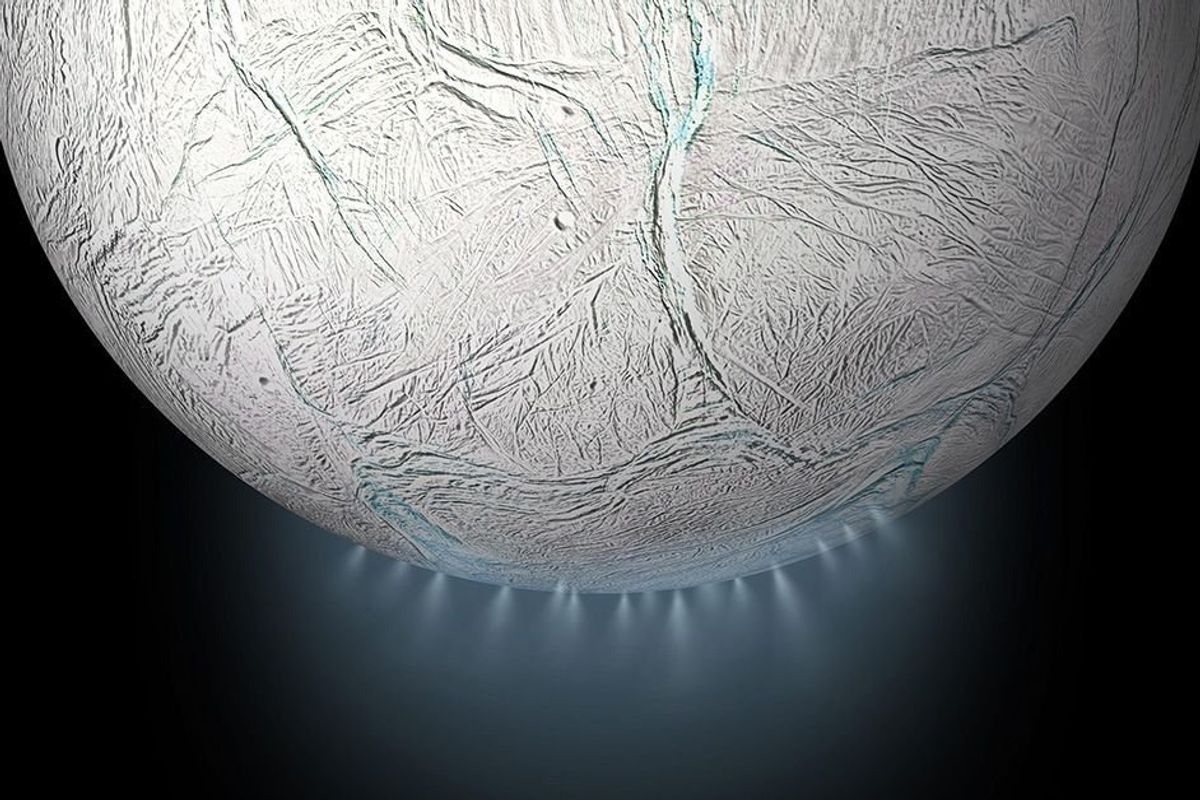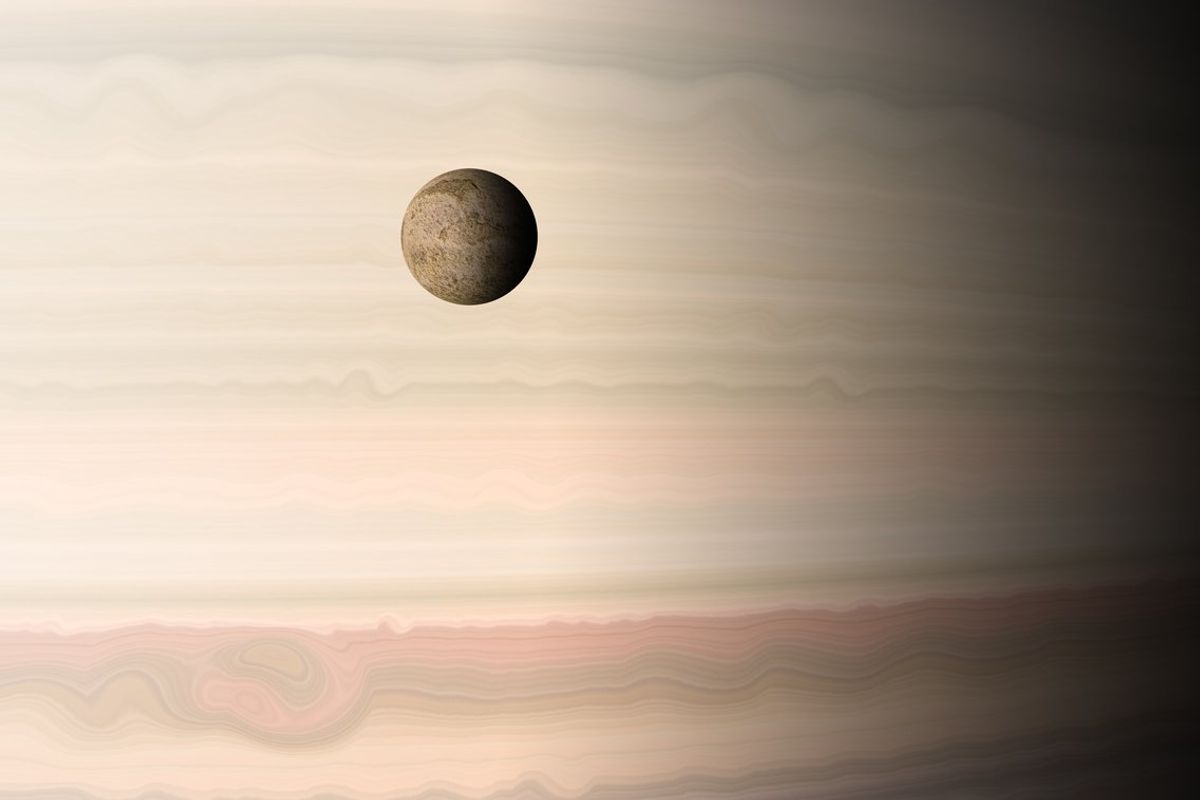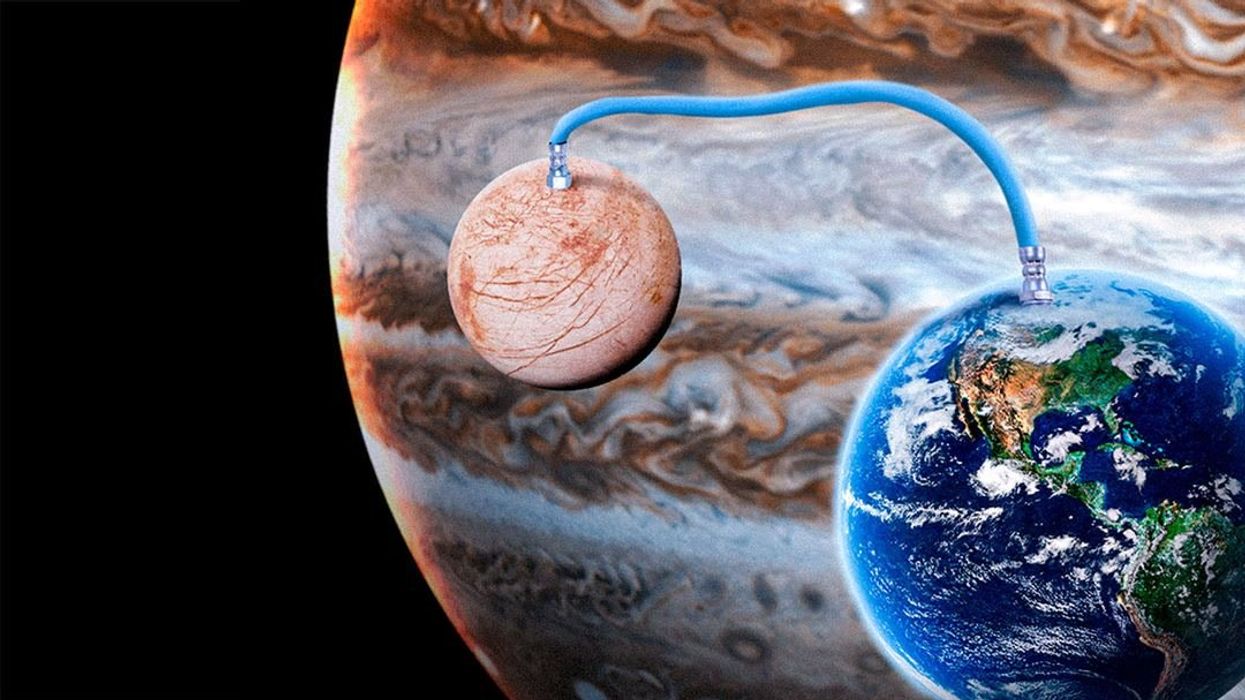Science & Tech
Harriet Brewis
Dec 11, 2023
What If We Brought Europa's Ocean Water to Earth?
Underknown / VideoElephant
It’s fair to say, Saturn isn’t the most hospitable planet in our solar system.
For starters, being a gas giant, it doesn’t even have ground to walk on, and its average "surface" temperature is -178C.
Yet, it’s a very different picture when you turn to its moon Enceladus.
Thanks to NASA’s Cassini spacecraft, scientists observed that plumes of ice were shooting up from the moon’s surface at speeds of around 1,448 kilometres (900 miles) per hour.
These seemed to be emanating from a vast subsurface ocean, prompting experts to consider whether the liquid might carry signs of life.
To answer this question, researchers will need to collect samples without destroying any organic molecules they may contain.
Now, a new study suggests that they should be able to do that without too much trouble – potentially paving the way for a major scientific breakthrough.

According to a team based at the University of California San Diego (UCSD), amino acids present within the ice should be able to survive contact with a spacecraft, meaning they could be collected and brought back to Earth for analysis.
This is significant because, prior to this study, chemists weren’t sure whether the speed of the plumes would break up any organic compounds contained within their ice grains, making them impossible to properly analyse.
In a paper on their findings, published in the journal PNAS, the UCSD colleagues wrote: “The search for extraterrestrial life, especially within our solar system, is one of the biggest endeavours of mankind.
“The icy moons of Saturn and Jupiter, Enceladus and Europa, are particularly promising for hosting life, as they have shown evidence for the three important criteria: water, energy, and organic chemicals.
“Both moons eject their subsurface ocean material as a plume of icy particles, providing the opportunity to study the ocean composition and potential habitability via plume flythrough sampling.
“The results reported here provide unambiguous laboratory evidence that we could fly through these plumes at speeds up to 4.2 km [per second] and successfully detect intact amino acids, an important class of biosignature molecules, in situ.”

To draw their conclusion, the biochemists created ice particles by pushing water through a needle at a high voltage.
This charge split the water into increasingly small droplets, which were then injected into a vacuum where they froze.
The team measured each ice grain’s mass and charge, then used image charge detectors to observe them as they flew through the spectrometer.
They found that amino acids within the grains could survive impact speeds of up to 15,128 kilometres (9,400 miles) per hour, which means they could easily withstand an encounter with a space probe.
“To get an idea of what kind of life may be possible in the solar system, you want to know there hasn’t been a lot of molecular fragmentation in the sampled ice grains, so you can get that fingerprint of whatever it is that makes it a self-contained life form,” the study’s lead, Robert Continetti, explained in a statement.
“Our work shows that this is possible with the ice plumes of Enceladus.”
Yet, as Continetti and his colleagues stressed, the implications of their findings extend well beyond the moon of Saturn.
Next year, NASA will launch the Europa Clipper, which will travel to Jupiter and its surroundings.
Europa, one of the largest of the planet’s moons, is another ocean world with a similar icy composition to that of Enceladus.
Experts hope that the Clipper or other future probes to Saturn will be able to identify a specific series of molecules in the ice grains that could indicate whether life exists in the subsurface oceans of the moons.
However, the molecules will first need to survive their speedy ejection from the moon and collection by the spacecraft.
Now we know this is, at the very least, possible.
Sign up for our free Indy100 weekly newsletter
Have your say in our news democracy. Click the upvote icon at the top of the page to help raise this article through the indy100 rankings
Top 100
The Conversation (0)













